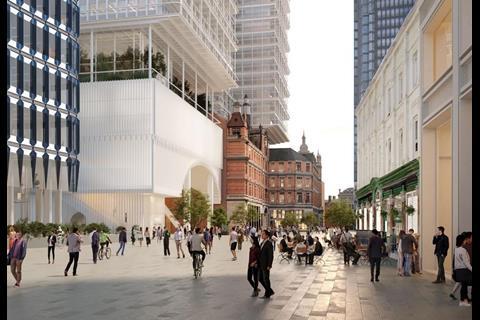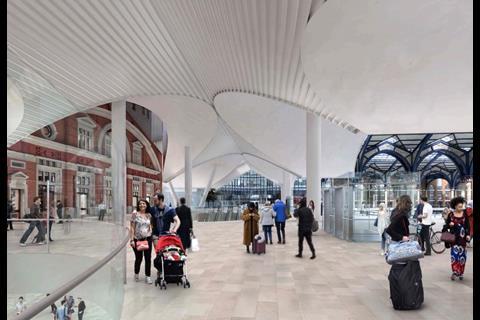The developer has failed to learn the lessons from the successful London Bridge redevelopment and risks destroying a precious piece of the City’s heritage, writes Ben Derbyshire

The renovation of London Bridge Station is a triumph. It was a strong contender for the Stirling Prize in the year that Goldsmith Street housing by Mikhail Riches won. An incomprehensible warren of incoherent passages woven through railway arches has been transformed into a majestic concourse where Victorian railway engineering of loadbearing brickwork creates a setting for a thoroughly contemporary, legible and enjoyable transport interchange. Sellar, the developer wisely selected Grimshaw Architects for the station redesign and Renzo Piano to create The Shard – the commercial development subsidising expensive infrastructure work to the track and station.
The circumstances at Liverpool Street Station are entirely different. First of all, there is nothing fundamentally wrong with the nineteenth century station as it is, with its sensitive 1980s adaptations by British Rail architect, Nicholas Derbyshire. Light floods through the elegant cast iron and glass canopy, and passengers connect effortlessly to and from Liverpool Street, itself framed on both sides by buildings redolent of the age of steam. The place is a precious reminder of an era when Victorian architects and engineers were at their most inventive, bringing dramatic and brave interventions to civic life.

I believe Sellar and their team have fundamentally misunderstood the nature and importance of heritage here. Heritage is not just about the preservation of great architecture. Respecting the heritage of Liverpool Street, the former Great Eastern Hotel (now Andaz Liverpool Street) and the station behind requires that the history of the place as a whole is not eradicated, that its setting remains recognisably original, so that its significance is undiminished. The Sellar scheme fails on all these points.
There is absolutely no justification for the harm intended by Sellar in the planned decimation of Liverpool Street
Seen from street level, the buildings surrounding Liverpool Street are a rare survival, meeting the sky with a typically complex Victorian roofscape of gables, mansards and oeil de boeuf windows. The station hotel stands out as a striking example of this (albeit sensitively adapted by Conran), but the rest of the streetscape contributes to the whole. Nowhere is more indicative of the poverty of Sellar’s plans than the juxtaposition between this roofscape and the soffit of the new tower that looms over the hotel. This represents a complete lacuna of architectural invention, because in the end there is no satisfactory solution – even in the most capable hands.
This crushing diminution of Victorian grandeur is not the only place where the overbearing commercial development imposes disastrously. The station concourse is deprived of sun and daylight. The Grade II* listed hotel is pierced right through by structural pylons holding up the huge development above. Foot-to-the-ground nineteenth century reality is literally turned on its head. Like so many commercial developments being proposed in the city, public space is removed to roof level. Life for Londoners at street level will soon be lived amongst a forest of columns and in penumbral gloom, while a favoured few cavort in swimming pools, roof gardens and viewing platforms overhead.
Hopefully the City of London and, if necessary, the Secretary of State will recognise these heritage concerns, surely more than enough for a refusal. And that’s before we get to questions about whether, in post-pandemic times, there really is justification for so much more office space in London, or whether commuting will ever grow at the rate the developers assert. Even if so, there is plenty of capacity elsewhere, at Canary Wharf for instance. There is absolutely no justification for the harm intended by Sellar in the planned decimation of Liverpool Street.
>> Also read: Why is Herzog and de Meuron submitting this bonkers proposal for Liverpool Street?
Postscript
Ben Derbyshire is chair at HTA Design and a former president of RIBA


















4 Readers' comments